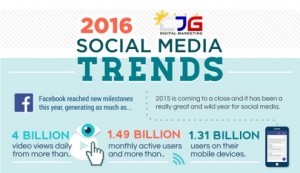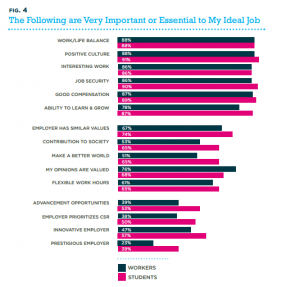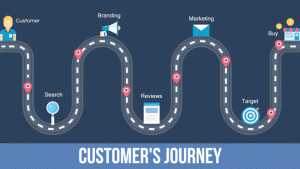
Are you using Twitter to grow awareness and demand for your brand? You should be.
Recent studies show that Twitter users are big shoppers. On average, Twitter users shop online 6.9x a month, while non-users shop online just 4.3x a month. This is especially good news for SMBs, as Twitter reports that 60% of users purchase from an SMB. Beyond direct conversion, Twitter is an increasingly popular resource for customers along the purchasing funnel –– and nearly half (49%) of female Twitter users say Twitter content has influenced their purchase decisions.
The data speaks for itself: Twitter is prime real estate for brands wanting to increase conversion, revenue and social proof (e.g., customer reviews via social media). The platform represents a wide variety of interests and demographics, and is particularly relevant for college-educated audiences under 50. Some 36% of Twitter users visit the site daily, with 22% saying they go on Twitter several times a day.
We’ve broken down exactly what you need to know to start using Twitter for ecommerce advertising and generating brand awareness, new customers and ROI for your brand.
Your Twitter Advertising Options
Twitter offers objective-based campaigns, in which SMBs only pay for the actions that align with their goals. Those goals are often to gain:
- New followers
- Website clicks or conversions
- App installations or engagements
- Tweet engagements (retweets, favorites, replies, etc.)
- Leads on Twitter
For the most part, website click campaigns are the most effective for retailers. Here’s a quick breakdown of what that is and how it works.
Website Clicks Campaign
A website clicks or conversions campaign allows you to use a Website Card with your promoted tweets. Website Cards offer a choice of call-to-action (CTA) buttons, an image and a headline to let you drive traffic to your site directly from a tweet. Promoted tweets with Website Cards drive 43% more engagement than just tweeting out a link. You’ll only pay for clicks to your website, and you can set up online conversion tracking to see every dollar spent. You can also set up remarketing based on people who have already visited your website.
What a website clicks campaign looks like:
Check out how RockTape, an athletic tape and equipment retailer, used their promoted tweet to generate clicks and conversions. First, they used a compelling image that speaks to their brand and gives context to the viewer. For this tweet, RockTape chose to advertise their overall mission statement and product strategy as opposed to a specific product. The company brands themselves as one which inspires and challenges others to be active. And, through the “Shop now” CTA, RockTape drives traffic back to their online store.

Best Practices to Get the Most out of Your Twitter Ad Spend
While most brands understand the steps necessary for executing on a social strategy — monitoring who’s talking about you, publishing content that resonates with your audience and reporting on your results — a successful social advertising program is much more complex than simply setting up an ad and letting it be. Because Twitter is a great platform to connect immediately and personally with your customers, you can build personal relationships with people who are interested in your brand and your story.
In fact, people who follow brands on Twitter generally really like those brands, and are more inclined not only to purchase from them, but to communicate with them on a 1:1 basis as well.
- 57% of Twitter users discovered an SMB on Twitter
- 73% of people feel better about an SMB after following them on Twitter
- 60% of people have purchased something from an SMB because of Twitter
- 9 out of 10 Twitter users have actively engaged in a conversation with SMBs
So, to get the most out of your Twitter ad, here are some best practices:
- Don’t overthink it: On Twitter, it’s best to keep it simple. You only have 140 characters, so the shorter your message, the better. Twitter reports that tweets with less than 120 characters see on average an 8% engagement lift and tweets with less than 100 characters see an 18% engagement boost than those at 140 characters. Be concise and see results.
- Make it visual: Adding an image or other rich media to your tweets can get you a 313% lift in engagement and a 52% increase in retweets. Even more impressive, tweets using Vine saw a 256% increase. So, get creative and use gifs, Vine or other multimedia outlets to increase ad engagement.
- Be approachable and human: People are more likely to interact when they know they’re having a conversation with a human who has personality. Treat your social media audience with a personable and somewhat humorous lens since personality helps people identify with a brand. According to Twitter, 70% of users retweet because they like a business’s content.
- Extend the conversation: Don’t force yourself into the conversation –– work to keep it going. Twitter reported that people who responded to @handles only 1x per week saw engagement 18% above those who did not respond to their followers. How can you extend the conversation? Take advantage of trending hashtags. What are people talking about and how can you relate it back to your brand and your ad? When in doubt, ask a question. When deciding what to tweet, Twitter suggests businesses to follow the 80/20 rule: 80% of your tweets should focus on driving interactions with your followers, such as retweets, replies and favorites. Only 20% should link back to product features or special promotions. This way, you build rapport with your customers before you overload them with advertisements.
- Use a Website Card: Website Cards allow you to give users much more context, priming them for the clickthrough to your site. Also, when you click the image on a Website Card, it acts as a link and drives people to your site. Normally, clicking on an image in a tweet would only expand the image. A Website Card gives you more clickable real estate, increasing clickthrough.
Once you start implementing these tips, take some time to analyze how they changed your social engagement and advertising success. Remember, your strategy should always involve monitoring, publishing and reporting. Once you figure out what works best for your brand, double down and continue to iterate.
Photo: Flickr, Andreas Eldh
(186)









